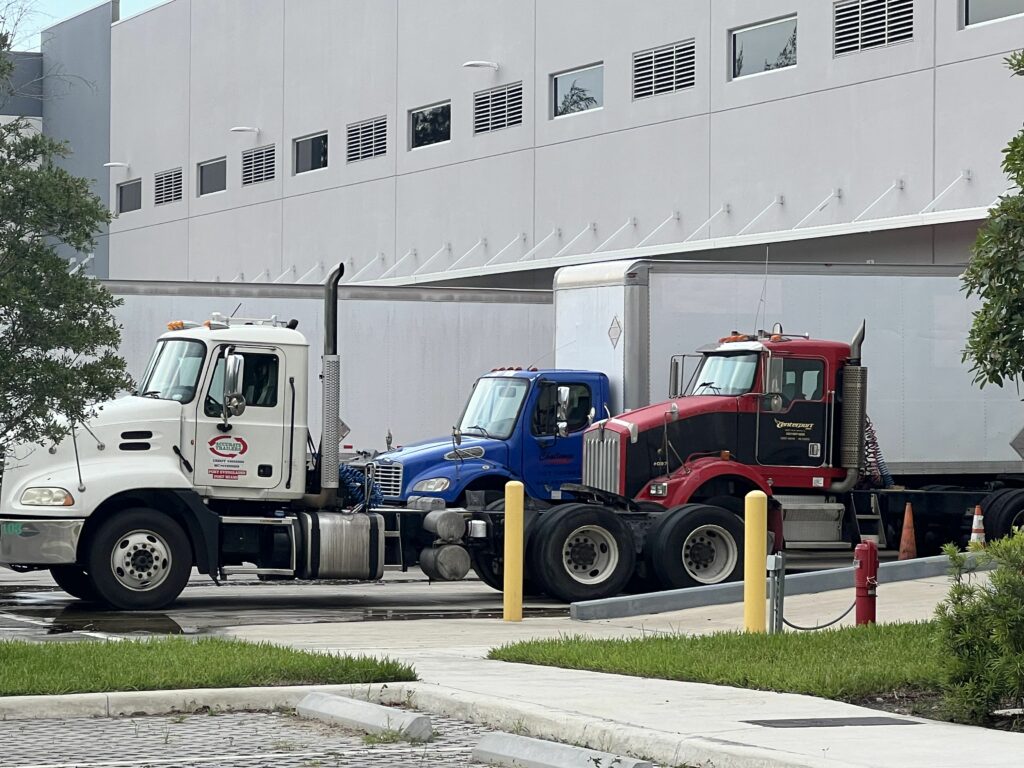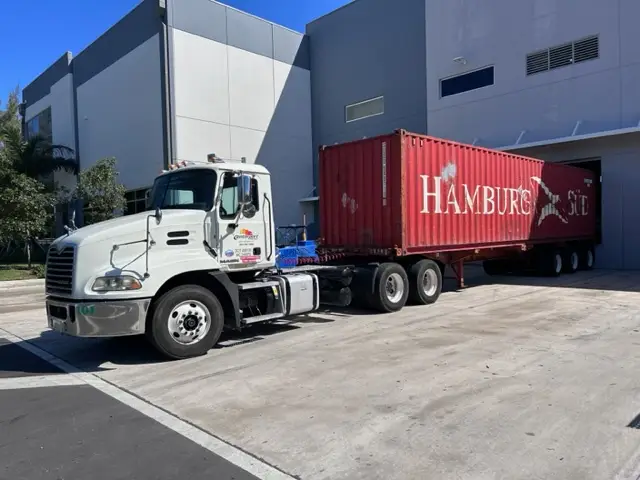The volume of international trade is projected to increase by 3.0% in 2025, and this global trade recovery suggests that businesses have to be more conscious about where they fit in global supply chains. It’s through shipment efficiency that businesses can manage to move freight without straining their budgets while achieving faster deliveries to their end customers.
Drayage carriers are a part of the longer logistics chain that helps in hauling freight from or delivering to the seaport or a border point and is central to making your supply chains fluid and agile. A key strategy in this regard is freight consolidation, which refers to the process of combining several shipments together in a single container. In this article, we explore in depth how freight consolidation works and how it can help drayage services maximize their efficiency.

How to Implement Consolidation in Drayage Logistics
1. Analyze Your Shipment Patterns
A critical question to begin with is to ask whether it’s possible to consolidate shipments or not. If you are interested in the freight consolidation option, the very first thing you need to do is to analyze your shipment patterns. In assessing the need for consolidation, take into account your shipment data, particularly the volume and frequency of freight, the target destination, and the drayage fees to be incurred.
The data will reveal routes where you consistently ship smaller shipments to a single location, and based on that, you can determine which shipments are costing you more when you ship separately. This will set the stage for you to move away from fragmented shipping towards consolidation through a drayage carrier.
2. Partner with a 3PL or Drayage Trucking Company
Moving forward, you can attempt to classify or group shipments based on product category or similar shipping routes and final destination. At this stage, you can consider working with a 3PL provider or drayage company to manage the entire logistics process and provide you with the infrastructure for consolidating shipments from different suppliers or customers.
3. Combining and Transporting Freight
This may involve consolidating smaller shipments from various sources into one large shipment. The shipment may then be loaded and arranged onto a drayage container for its outbound destination. This is generally done through drayage trucks or ocean carrier vessels to transport goods from one point to another.
4. Deconsolidation
Once the container arrives at the destination port, it is unloaded and deconsolidated or broken down into its component shipments for shipping off to their final customers.
5. Choose the Right Technology
Technology plays a vital role in streamlining drayage operations for effective consolidation. Two common applications for this purpose include a warehouse management system, which functions to optimize routes, track shipments in real-time, and automate manual processes like documentation. A warehouse management system (WMS) is designed to manage inventory levels at warehouses or distribution centers, right from receiving and storing products to packing and shipping them.

Benefits of Freight Consolidation for Drayage Carriers
Lower Transit Times
Combining disparate shipments from multiple sources into one large shipment allows transportation resources to be used to the maximum while reducing delays that happen in case of less-than-truckload (LTL) or less-than-container load (LCL) shipments.
Typically, retailers encounter a greater amount of handling when working with LTL or LCL drayage trucking services, which extends delivery times. However, freight consolidation allows retailers to liaise with other shippers or drayage carriers to overcome handling and hence reduce delays.
Optimized Routing
By leveraging drayage freight consolidation, drayage carriers can reduce the number of trips they make, speeding up transit times. These carriers utilize technology to identify direct routes and thus dispense with unnecessary detours or backtracking. This means that they have to travel less than usual, which ultimately leads to faster deliveries while lowering the environmental impact of these operations.
For instance, advanced route optimization software can guide logistics providers in choosing the most efficient series of stops for drayage shipping to a specific region. The assessment is based on several factors, such as delivery time frames, the existing traffic conditions, and the estimated distance to cut down on both travel time and fuel consumption.
Types of Freight Consolidation
Freight consolidation can happen in one of the following three ways, each involving a different point in the shipping process.
1. Consolidation at Origin
This process is generally applied in international shipping operations where shipments first go through consolidation at a facility such as a factory, warehouse, or distribution center, where they first arrive before they set off for the final destination via a drayage service. Combining multiple shipments into one large cargo promotes economies of scale by enabling shippers to share transportation costs for a larger shipment, which carries lower freight rates.
2. Consolidation at Destination
This is usually the go-to method for local drayage carriers transporting domestically, which involves collecting shipments at a central point near the final destination, where they are consolidated into one shipment before being delivered.
3. In-Transit Consolidation
This is when shipments are consolidated at different points during transit, mainly by transferring shipments between different modes of transportation. Although it facilitates consolidation by allowing shipments to be received and dropped off at different times, on the other hand, it results in an intensive handling process that can expose the goods to potential damages.
FAQ’s
1. What is drayage, and why is it important in logistics?
Drayayge can be seen as the connecting link between longer transportation legs, which typically span the journey from a port to a warehouse or a warehouse to a rail terminal. Drayage carriers have a significant role to play in keeping cargo on the go and minimizing dwell time or the waiting period at a facility.
2. Are there any challenges with shipment consolidation?
Yes, consolidation faces challenges like working out mutual schedules to ensure cargo is compatible with all shippers and minimizing delays if one of the shipments in the consolidated load arrives late. However, advanced logistics makes it possible to track shipments in real time and plan optimized routes to mitigate these risks.
3. What are the benefits of shipment consolidation for businesses?
Consolidation comes with several benefits, such as reduced shipping costs, faster delivery speeds, and lower environmental impact during cargo travel. An optimized trucking schedule allows businesses to benefit from lower freight rates and fear delays, making their supply chains more efficient and reliable.
4. How do drayage carriers determine which shipments to consolidate?
Drayage carriers decide based on various factors such as cargo type, weight limits, the shipment destination, and, most importantly, pickup and drop-off schedules. By using logistics software, they are able to match corresponding shipments and analyze routes to ensure compliance with safety and regulatory standards.
Conclusion
In an increasingly interconnected world, the drayage services market is likely to become more paramount as businesses seek to balance efficiency with sustainability. Consolidation isn’t simply meant for large businesses with complex supply chains but can be embraced by businesses of all sizes in cutting costs and enhancing the efficiency of their drayage operations.
Efficient coordination relies on striking the right balance between shipment schedules and maximizing available space to achieve lower shipping costs per unit. Its success hinges on precise coordination and communication between stakeholders like suppliers, warehouses, and drayage carriers to build a synchronized supply chain that helps cargo move around most efficiently.
Eager to explore whether consolidation is aligned with your shipping goals? Schedule a free consultation with us to get started.